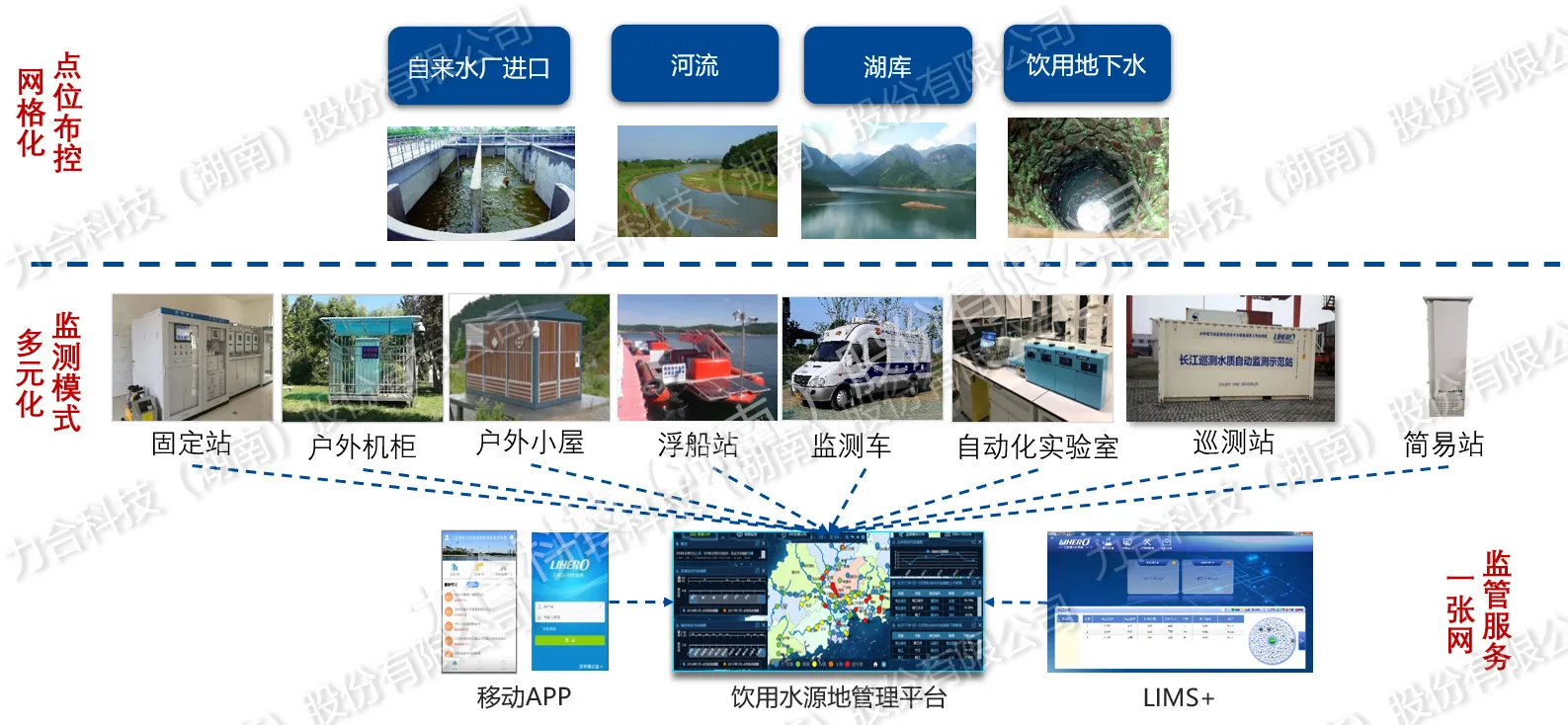
Early Warning and Monitoring Solution for Drinking Water Sources
This solution is based on the Monitoring, Evaluation, and Publication Plan for Water Quality in Urban Centralized Drinking Water Sources (Ministry of Ecology and Environment [2002] No. 144) and local regulations regarding the protection of drinking water sources. It aims to strengthen the protection and supervision of local drinking water sources and ensure safe drinking water for the public. A monitoring system is established to assess the water quality of drinking water sources in real-time using monitoring instruments integrated with modern sensor technologies, automated measurement, automated control, computer application technologies, specialized analysis software, and communication networks. Monitoring data is uploaded in real-time to the drinking water source management platform, enabling real-time automated monitoring and remote supervision of multiple water quality parameters. This system provides strong support for pollution prevention and control decisions.
The early warning and monitoring solutions for drinking water sources adopt a combination of outdoor small shed water stations, fixed stations, and mobile monitoring vehicles. It conducts grid-based and high-frequency monitoring according to the monitoring network principles, the scale of the water sources, and evaluation of cross-sections. By integrating IoT technology, it monitors parameters such as water temperature, pH value, dissolved oxygen, total phosphorus, permanganate index, ammonia nitrogen, biological toxicity, and coliform bacteria in real-time. It also tracks pollution sources in real-time. Additionally, a comprehensive water environment information management platform is built to support the evaluation and warning of drinking water sources, facilitating precise management for governing departments.
Grid-based monitoring combining fixed and mobile methods to enable real-time warnings for drinking water sources.
Real-time access to water quality conditions through large-scale monitoring data.
Accurate prediction and control of water quality trends through data modeling and analysis, ensuring improvements and compliance with evaluation standards.

Fixed Water Quality Monitoring Stations
Outdoor Small Shed Stations
Floating Stations
Automated Laboratories





